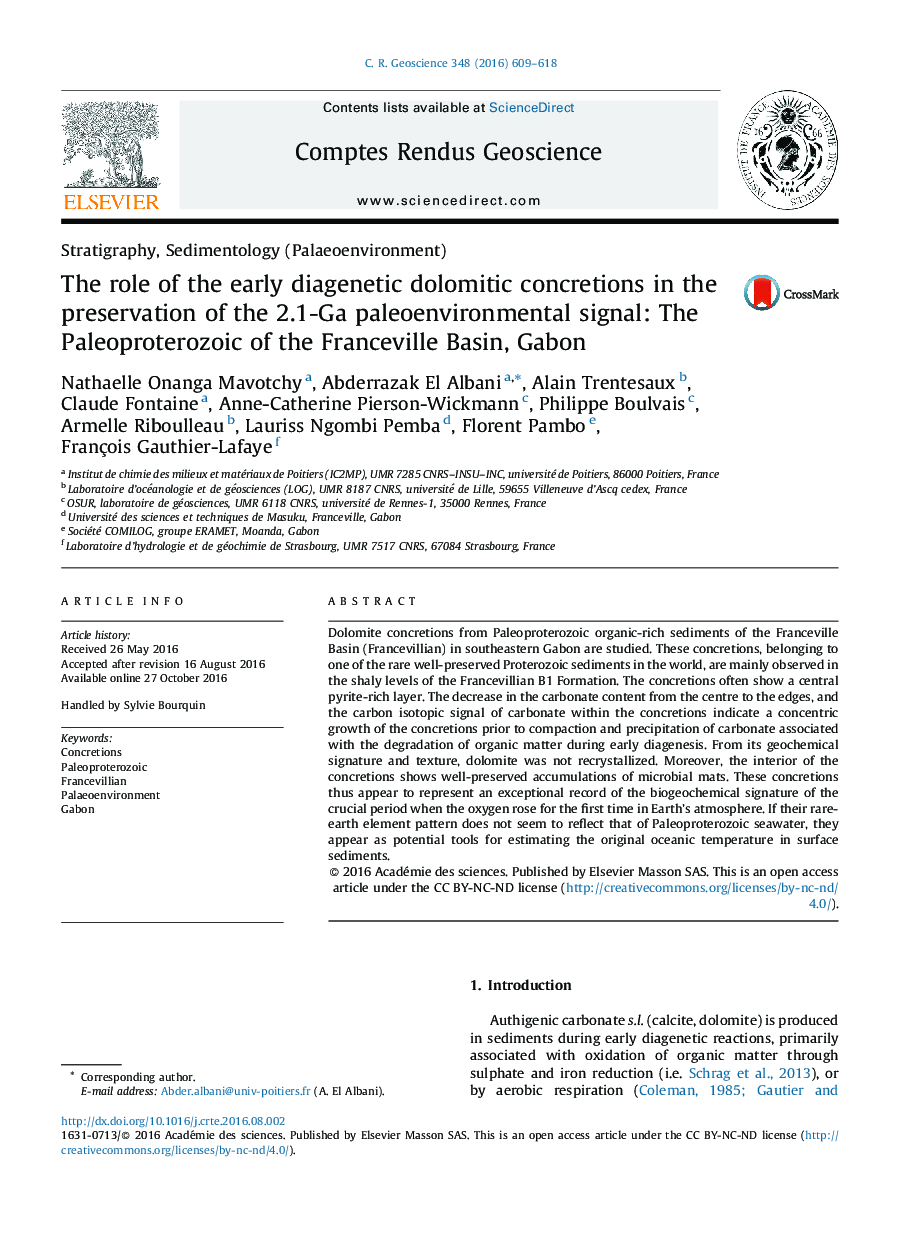| Article ID | Journal | Published Year | Pages | File Type |
|---|---|---|---|---|
| 5755165 | Comptes Rendus Geoscience | 2016 | 10 Pages |
Abstract
Dolomite concretions from Paleoproterozoic organic-rich sediments of the Franceville Basin (Francevillian) in southeastern Gabon are studied. These concretions, belonging to one of the rare well-preserved Proterozoic sediments in the world, are mainly observed in the shaly levels of the Francevillian B1 Formation. The concretions often show a central pyrite-rich layer. The decrease in the carbonate content from the centre to the edges, and the carbon isotopic signal of carbonate within the concretions indicate a concentric growth of the concretions prior to compaction and precipitation of carbonate associated with the degradation of organic matter during early diagenesis. From its geochemical signature and texture, dolomite was not recrystallized. Moreover, the interior of the concretions shows well-preserved accumulations of microbial mats. These concretions thus appear to represent an exceptional record of the biogeochemical signature of the crucial period when the oxygen rose for the first time in Earth's atmosphere. If their rare-earth element pattern does not seem to reflect that of Paleoproterozoic seawater, they appear as potential tools for estimating the original oceanic temperature in surface sediments.
Related Topics
Physical Sciences and Engineering
Earth and Planetary Sciences
Earth and Planetary Sciences (General)
Authors
Nathaelle Onanga Mavotchy, Abderrazak El Albani, Alain Trentesaux, Claude Fontaine, Anne-Catherine Pierson-Wickmann, Philippe Boulvais, Armelle Riboulleau, Lauriss Ngombi Pemba, Florent Pambo, François Gauthier-Lafaye,
